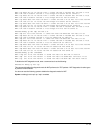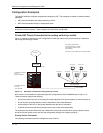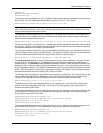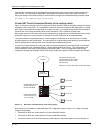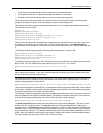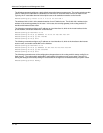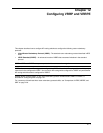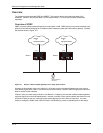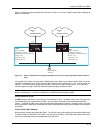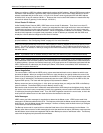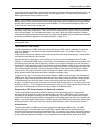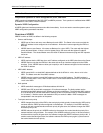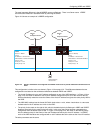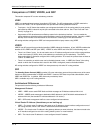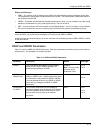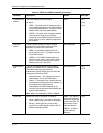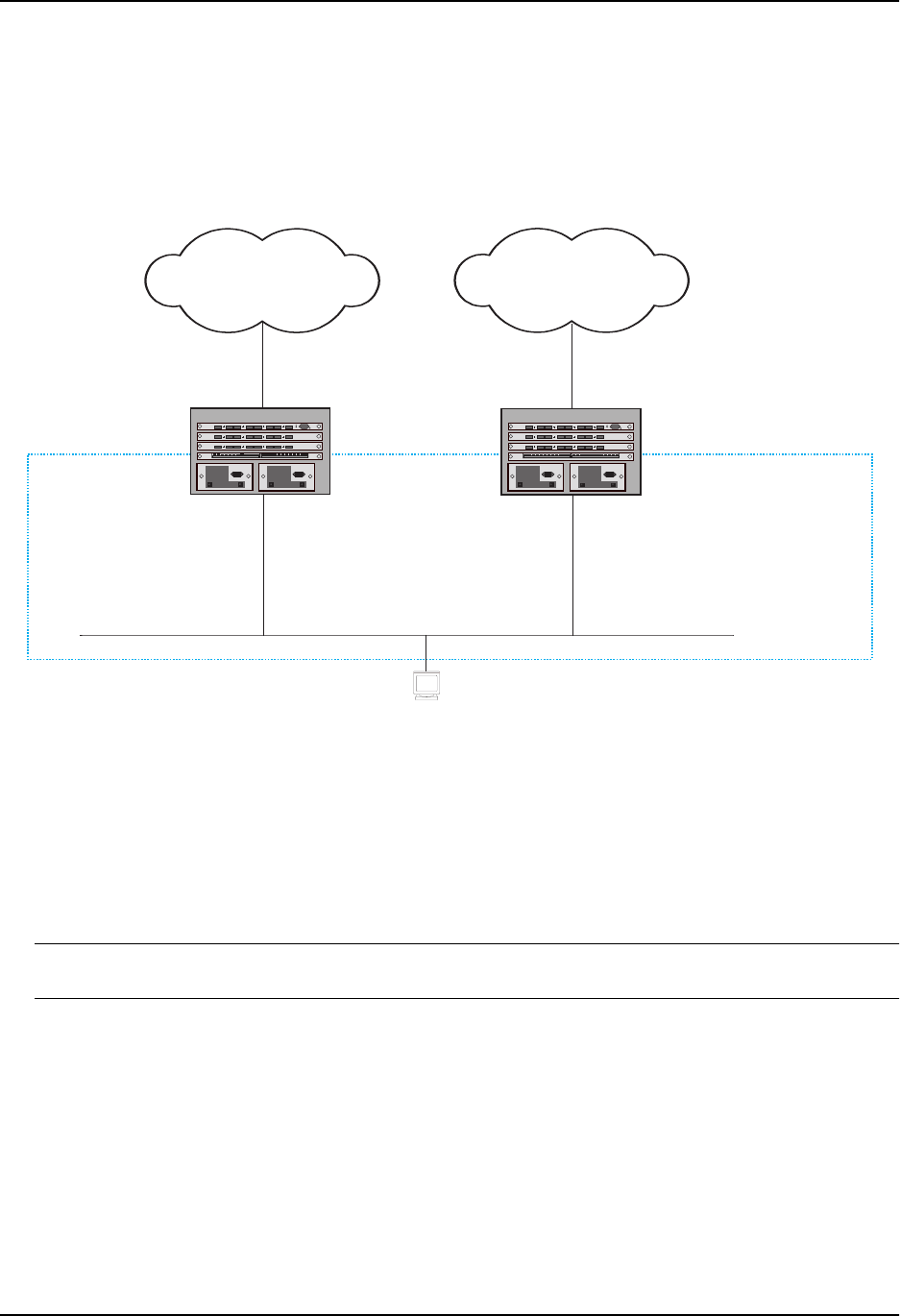
Configuring VRRP and VRRPE
Figure 12.2 shows the same example network shown in Figure 12.1, but with a VRRP virtual router configured on
Router1 and Router2.
VRID1
Internet
or
enterprise Intranet
e 3/2
192.53.5.3
e 1/6
e 1/5
e 2/4
Internet
or
enterprise Intranet
MAC address = 00-00-5E-00-01 01-
Track port = e 2/4
Track priority = 20
Router1 = Master
Priority = 255
IP address = 192.53.5.1
VRID1
MAC address = 00-00-5E-00-01 01-
Track port = e 3/2
Track priority = 19
Router2 = Backup
Priority = 100
IP address = 192.53.5.1
192.53.5.1
Host1
Default Gateway
192.53.5.1
Figure 12.2 Router1 and Router2 are configured as a VRRP virtual router to provide redundant network access for
Host1
The dashed box in Figure 12.2 represents a VRRP virtual router. When you configure a virtual router, one of the
configuration parameters is the virtual router ID (VRID), which can be a number from 1 – 255. In this example, the
VRID is 1. The VRID must be unique within the LAN. VRIDs do not cross LAN boundaries. Thus, there is no
restriction against reusing a VRID with a different address mapping on different LANs.
NOTE: You can provide more redundancy by also configuring a second VRID with Router2 as the Owner and
Router1 as the Backup. This type of configuration is sometimes called Multigroup VRRP.
Virtual Router ID (VRID)
A VRID consists of one Master router and one or more Backup routers. The Master router is the router that owns
the IP address(es) you associate with the VRID. For this reason, the Master router is sometimes called the
“Owner”. Configure the VRID on the router that owns the default gateway interface. The other router in the VRID
does not own the IP address(es) associated with VRID but provides the backup path if the Master router becomes
unavailable.
Virtual Router MAC Address
Notice the MAC address associated with VRID1. The first five octets of the address are the standard MAC prefix
for VRRP packets, as described in RFC 2338. The last octet is the VRID. THE VRID number becomes the final
octet in the virtual MAC address associated with the virtual router.
12 - 3



